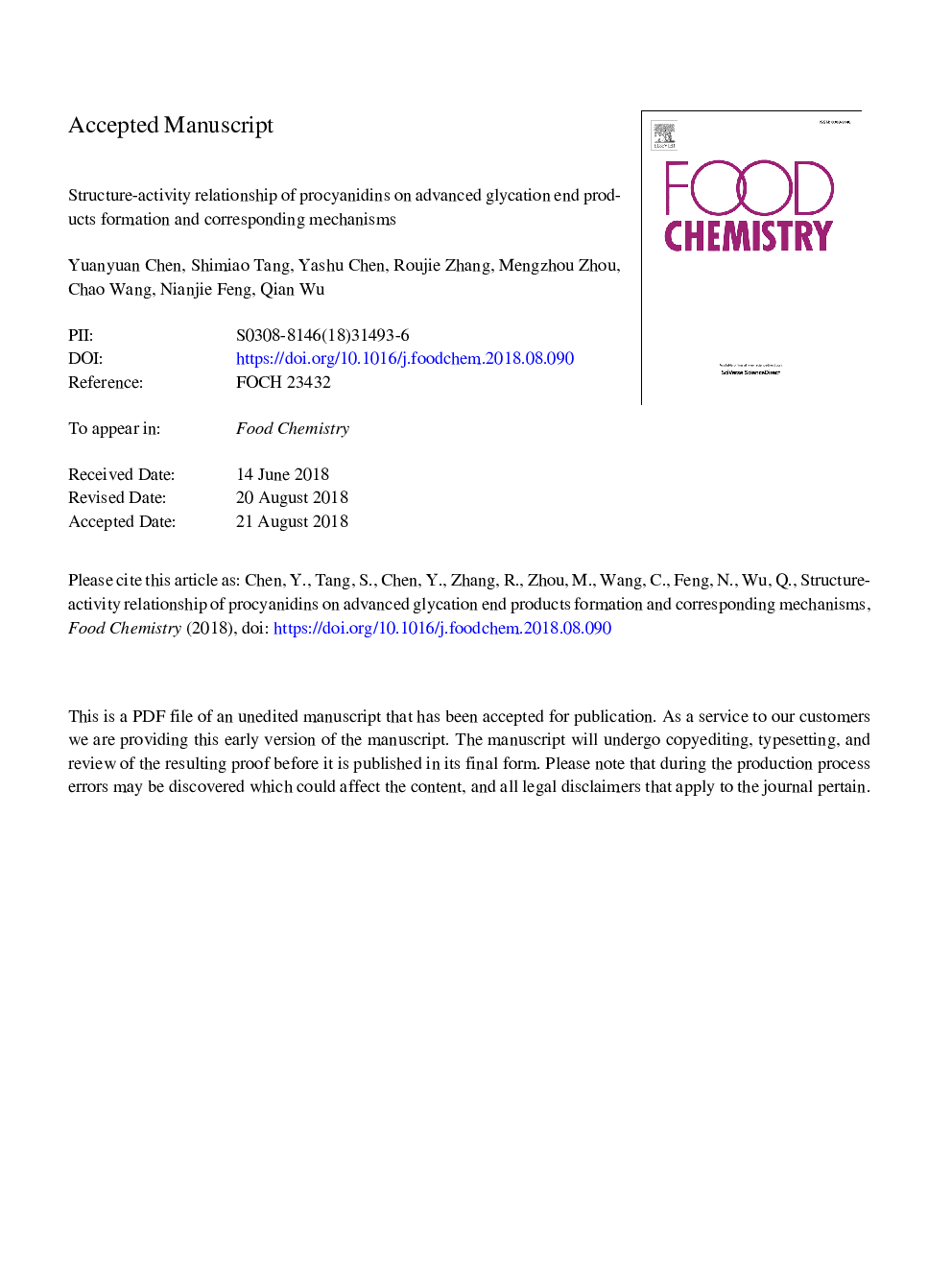| Article ID | Journal | Published Year | Pages | File Type |
|---|---|---|---|---|
| 11005654 | Food Chemistry | 2019 | 35 Pages |
Abstract
Nonenzymatic glycosylation (NEG) can generate advanced glycation end products (AGEs) and its intermediates α-dicarbonyl compounds, which contribute to the risk of diabetes. This study investigated the anti-glycation mechanisms and structure-activity relationship of (+)-catechin (CC) and (â)-epicatechin (EC). The results showed that the effect of CC on inhibiting AGEs was significantly better than that of EC (pâ¯<â¯0.05). By exploring the mechanism, we found that there was no significant difference in the ability of CC and EC to capture α-dicarbonyl compounds. But CC was found to be more efficient than EC to inhibit RO, OH and CHO radicals generation, which may be the primary reason that CC was more effective than EC on AGEs inhibition. What's more, CC showed better inhibitory effect on β-glucosidase that was close to the molecular docking study. Our results will provide a theoretical foundation for development of different structure of procyanidins as natural AGEs inhibitors in food and medicine.
Keywords
Related Topics
Physical Sciences and Engineering
Chemistry
Analytical Chemistry
Authors
Yuanyuan Chen, Shimiao Tang, Yashu Chen, Roujie Zhang, Mengzhou Zhou, Chao Wang, Nianjie Feng, Qian Wu,
